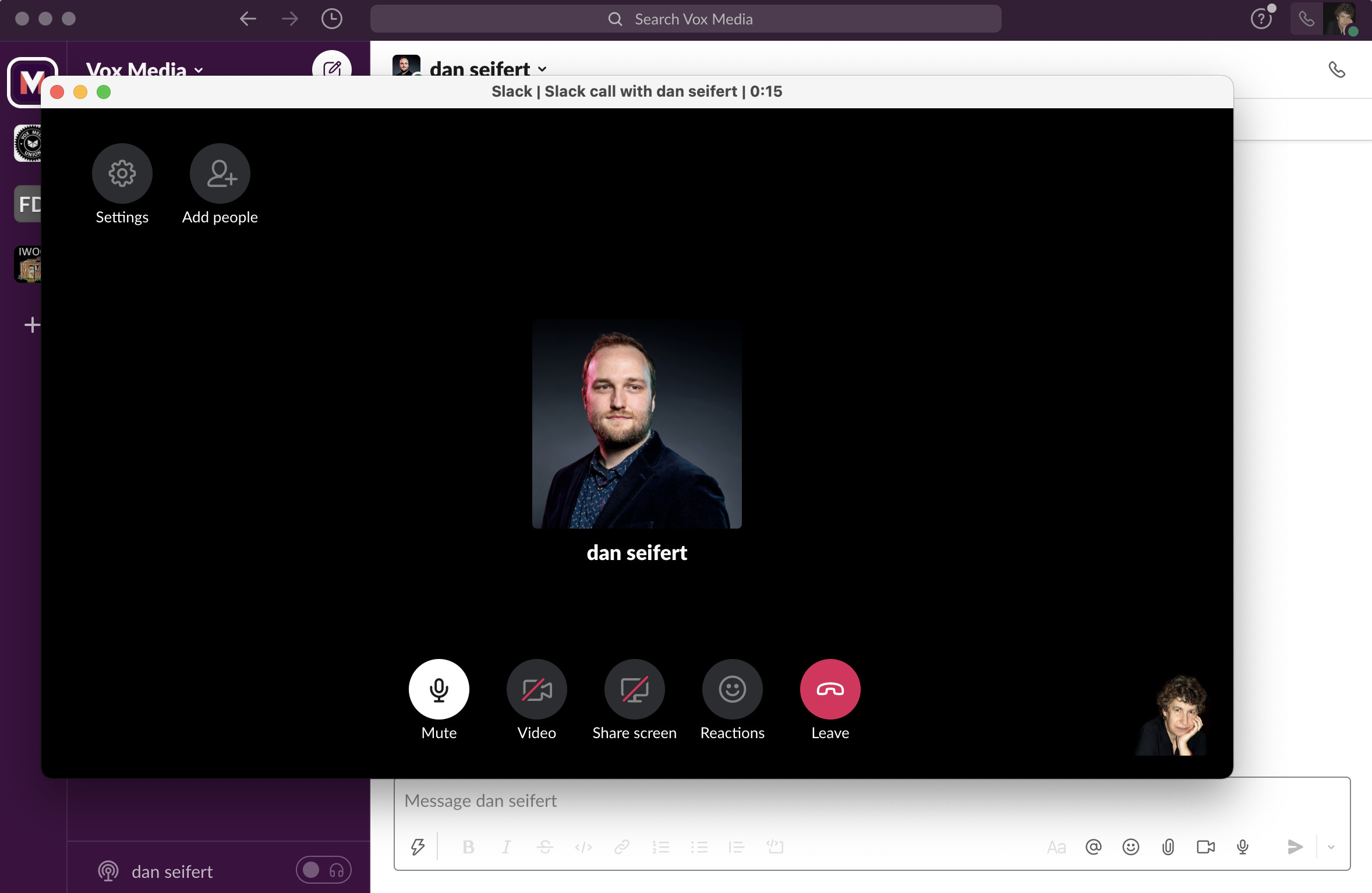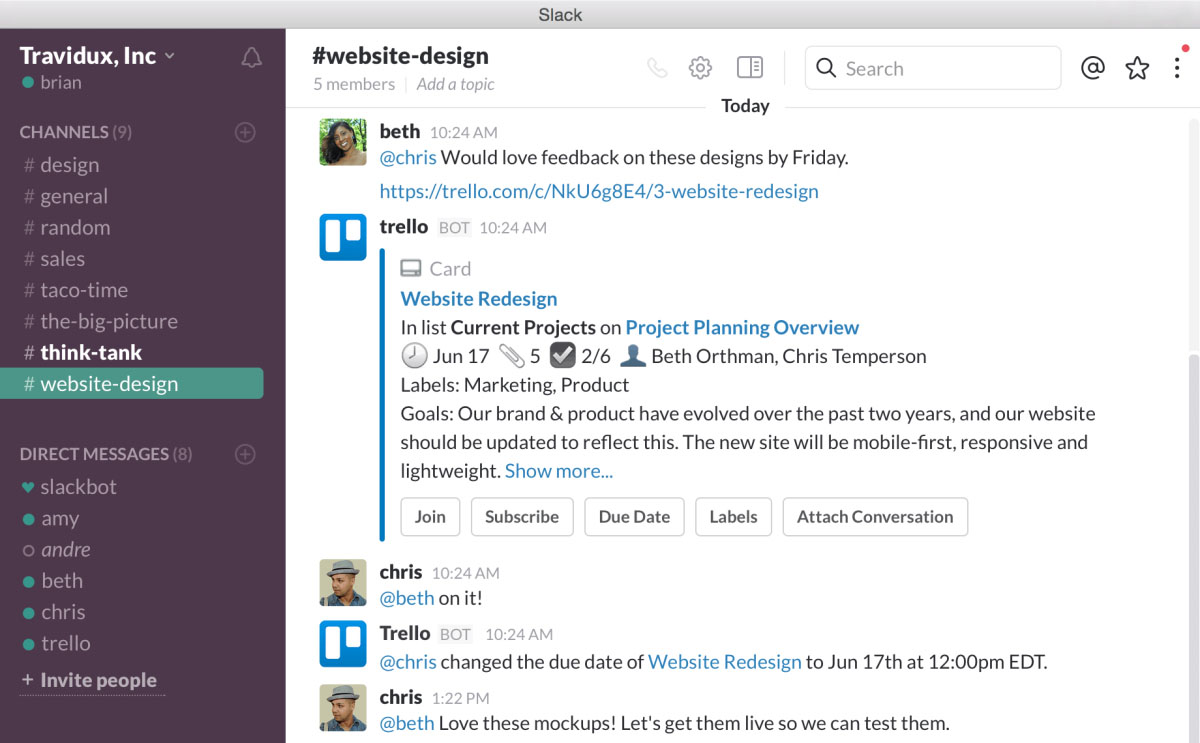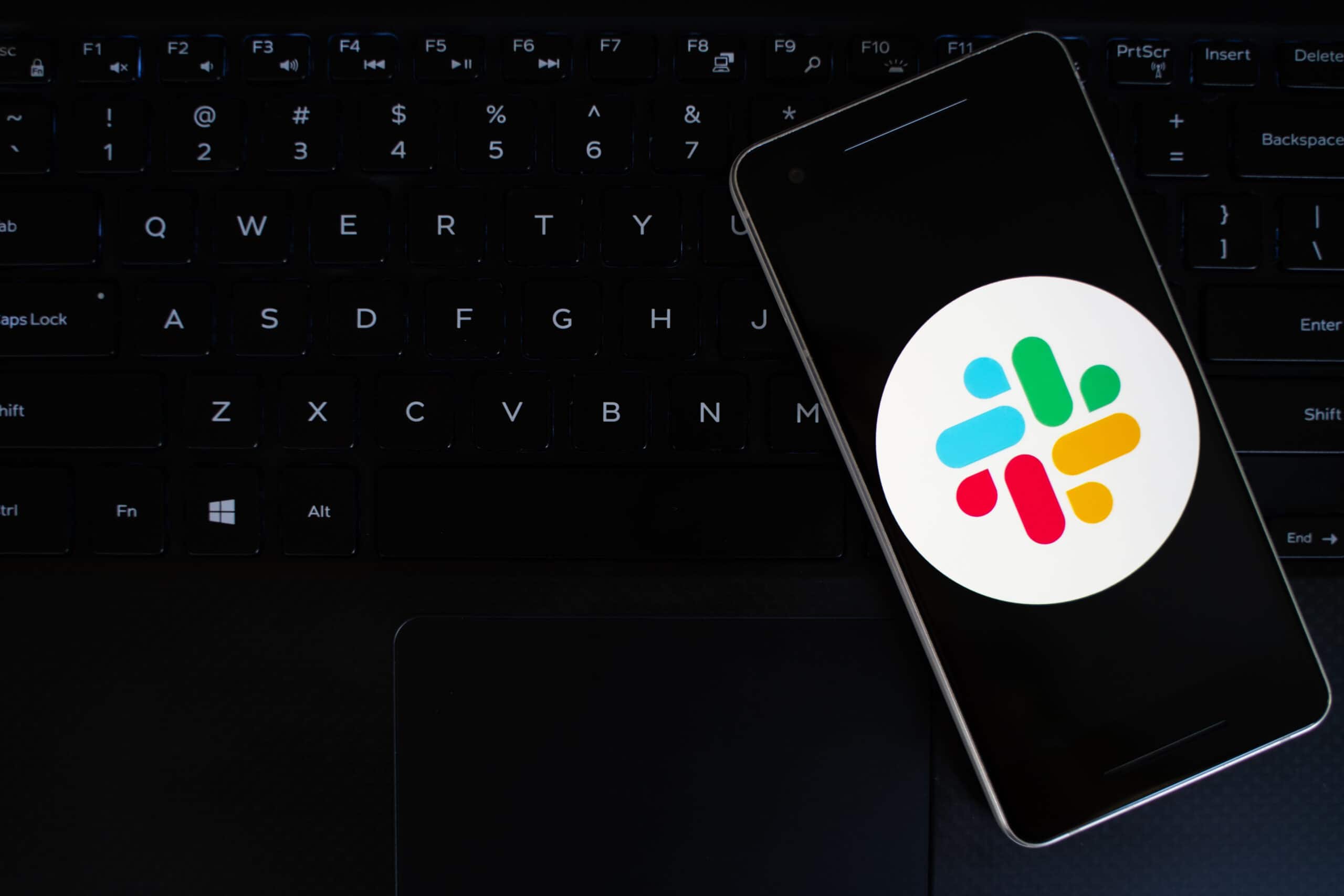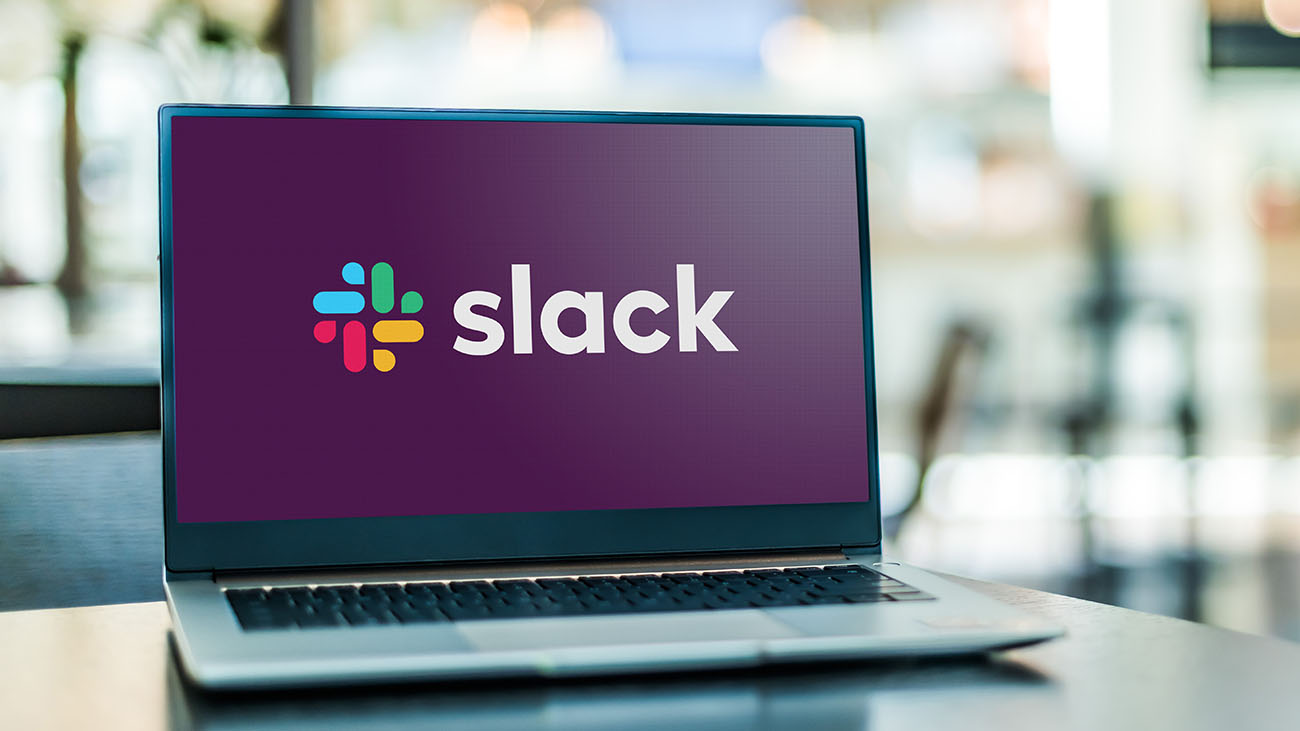Introduction
Slack is a powerful communication tool that provides an efficient way for teams to collaborate and stay connected. While its primary focus is on messaging, Slack also offers the capability to make audio and video calls, making it even more versatile for remote teams and individuals working from different locations.
In this article, we will explore how to set up and make calls in Slack, whether it’s a one-on-one call or a call within a channel. We’ll also discuss how to answer calls, use video during a call, share your screen, manage call settings, and troubleshoot common issues that may arise.
With Slack’s call features, you can have real-time conversations and discussions with your team members, clients, or business partners, eliminating the need for external communication tools. Whether you need to quickly address an urgent matter or have a more structured conference call, Slack has you covered.
Now, let’s dive into the details of how to effectively use the calling features in Slack and make the most out of this valuable communication tool.
Setting Up a Call in Slack
Before you can start making calls in Slack, you need to ensure that your workspace and devices are properly set up. Here’s a step-by-step guide to help you get started:
- Install the Slack App: If you haven’t done so already, download and install the Slack app on your computer or mobile device. You can find the app on the Slack website or through your device’s app store.
- Verify Your Audio and Video Settings: Ensure that your computer or device has a working microphone and camera. Test them in advance to make sure they are functioning properly.
- Check Your Internet Connection: It’s essential to have a stable and reliable internet connection for high-quality calls. Connect to a strong Wi-Fi network or use a wired Ethernet connection to avoid interruptions during your calls.
- Grant Necessary Permissions: Slack may request access to your microphone and camera. Allow these permissions to enable audio and video capabilities during calls.
- Adjust Call Notifications: Customize your call notification settings to receive alerts for incoming calls. You can choose to be notified via push notifications on your device, through the Slack app, or via email.
- Set Up Call Forwarding: If you’re using Slack on a mobile device, you can forward incoming calls to your mobile number. This ensures that you don’t miss any important calls while you’re on the go.
Once you have completed these setup steps, you are ready to start making calls in Slack. Whether it’s a quick audio call or a video conference, Slack provides a seamless calling experience for effective communication within your team or across multiple teams.
Making a Call in a Direct Message
With Slack, you can easily initiate a call in a direct message with a specific person or a group of people. Here’s how you can make a call in a direct message:
- Select the Person or Group: Open the direct message with the person or group you want to call. You can do this by clicking on their name in the Slack sidebar or using the search feature to find the person or group.
- Click on the Phone Icon: In the top-right corner of the direct message window, you will find a phone icon. Click on it to start a call.
- Choose Audio or Video Call: Once you click on the phone icon, a menu will appear, giving you the option to choose between an audio or video call. Select the appropriate option based on your needs.
- Wait for the Person to Accept: After initiating the call, the other person will receive a call notification. They can choose to accept or decline the call. If the call is accepted, you will be connected and can start your conversation.
- Use Call Features: During the call, you can take advantage of various features to enhance your communication. You can mute and unmute your microphone, turn your camera on or off, add participants, and switch between audio and video modes.
- End the Call: When you are ready to end the call, simply click on the red phone icon in the call window or click the “Hang Up” button. The call will be disconnected, and you can continue your conversation through messaging if needed.
Making a call in a direct message is a convenient way to have one-on-one conversations or small group discussions within Slack. It eliminates the need for external communication tools and allows for seamless communication and collaboration.
Making a Call in a Channel
In addition to direct messages, Slack also allows you to make calls within a channel, enabling you to have group conversations with multiple team members. Here’s how you can make a call in a channel:
- Select the Channel: Open the channel in which you want to initiate the call. You can do this by clicking on the channel name in the Slack sidebar or using the search feature to find the channel.
- Click on the Phone Icon: In the top-right corner of the channel window, you will find a phone icon. Click on it to start a call.
- Choose Audio or Video Call: Once you click on the phone icon, a menu will appear, giving you the option to choose between an audio or video call. Select the appropriate option based on your needs.
- Invite Channel Members: By default, all members of the channel will be notified about the call and can join it. However, you can also choose to invite specific members by using the “@mention” feature. This way, only the invited members will receive the call notification.
- Wait for Members to Join: Once the call is initiated, all invited members will receive a call notification. They can choose to accept or decline the call. If the call is accepted, they will join the call and become part of the conversation.
- Use Call Features: During the call, you can take advantage of various features to facilitate communication. You can mute and unmute your microphone, turn your camera on or off, add or remove participants, and switch between audio and video modes.
- End the Call: When you are ready to end the call, click on the red phone icon in the call window or click the “Hang Up” button. The call will be disconnected, and you can continue the conversation in the channel if needed.
Making a call in a channel provides a collaborative and inclusive environment for team discussions. It allows for effective communication and decision-making among team members, ensuring everyone stays informed and engaged.
Answering a Call in Slack
When someone initiates a call with you in Slack, you will receive a call notification. Here’s how you can answer a call and join the conversation:
- Receive the Call Notification: When someone calls you, you will see a call notification displayed on your Slack screen. The notification will include the name of the person or channel initiating the call.
- Click on the Answer Button: To answer the call, simply click on the “Answer” button within the call notification. You will then be connected to the call.
- Choose Audio or Video Mode: Once you answer the call, you can choose to participate with audio only or enable your camera for a video call. Select the appropriate mode based on your preference and the requirements of the call.
- Use Call Features: During the call, you can take advantage of various features to enhance your communication. You can mute and unmute your microphone, turn your camera on or off, add participants, and switch between audio and video modes as needed.
- End the Call: When you are ready to end the call, simply click on the red phone icon in the call window or click the “Hang Up” button. The call will be disconnected, and you can continue your work or engage in other conversations.
Answering a call in Slack allows for quick and efficient communication, enabling you to connect with team members or clients in real-time. It eliminates the need for cumbersome external communication tools and ensures that you never miss important conversations or updates.
Using Video during a Call
Video calls offer a more immersive and engaging communication experience by allowing participants to see each other. Here’s how you can use video during a call in Slack:
- Start or Join a Video Call: Initiate or join a call as you normally would, either in a direct message or a channel. Make sure to select the video call option when prompted.
- Enable Your Camera: Once the call starts, you will have the option to turn on your camera. Click on the camera icon to enable your video feed. You will then be visible to all participants in the call.
- Adjust Your Video Settings: Slack allows you to customize your video settings to ensure optimal performance. You can adjust the video quality, choose between standard or widescreen mode, and use virtual backgrounds or blur effect to enhance your video appearance.
- Switch between Video and Audio Modes: During the call, you may want to switch between video and audio modes based on your preference or the limitations of your internet connection. Simply click on the camera icon to toggle your video on or off.
- Pin or Unpin the Video Feed: If you want to focus on a specific participant’s video, you can pin their video feed, which keeps it in a fixed position on your screen. This is especially useful during group calls with multiple participants.
- Maximize or Minimize the Video Window: Slack allows you to maximize or minimize the video window to fit your screen size and personal preference. This flexibility allows you to optimize your viewing experience during the call.
- End the Video Call: When the conversation is finished, simply click on the red phone icon or the “Hang Up” button to end the video call. You can then proceed with your other tasks or continue your communications through messaging if needed.
Using video during a call adds a personal touch to your conversations and fosters a stronger sense of connection and collaboration among team members. It allows for facial expressions, gestures, and visual cues, enhancing the overall communication experience.
Sharing Your Screen during a Call
Screen sharing is a powerful feature in Slack that allows you to share your computer screen with other participants during a call. Here’s how you can utilize screen sharing during a call:
- Start or Join a Call: Initiate or join a call as usual, either in a direct message or a channel. Ensure that the call is in progress before proceeding with screen sharing.
- Activate Screen Sharing: Once you’re in the call, locate the screen sharing icon in the call window. It usually looks like a computer screen with an arrow. Click on it to activate screen sharing.
- Select the Screen or Application: After clicking on the screen sharing icon, you will be presented with options to share your entire screen or specific applications. Choose the screen or application you want to share with the participants in the call.
- Toggle Audio Sharing: While sharing your screen, you have the option to include audio from your computer. If you are sharing a video or audio content, make sure to toggle the audio sharing setting on to ensure that participants can hear the sound.
- Control Permissions: Slack provides granular control over screen sharing permissions. You can choose to allow others to request control of your screen or limit it to the host only. It’s important to consider your privacy and security preferences when adjusting these settings.
- End Screen Sharing: Once you’re done sharing your screen, click on the stop sharing button or the screen sharing icon again to end screen sharing. This will return the call window to its regular view.
- Continue the Call: After screen sharing, you can resume your conversation or continue discussing any topics related to the shared content. Participants can ask questions, provide feedback, or collaborate on the content being shared.
Screen sharing is a valuable tool for remote collaboration, allowing you to present ideas, demonstrate processes, and troubleshoot technical issues more effectively. It enhances communication and collaboration by providing a visual context and promoting a deeper understanding among participants.
Managing Call Settings
Slack provides various call settings that you can manage to personalize your calling experience and optimize your communication. Here are some key settings you can adjust:
- Audio and Video Settings: Before making or joining a call, you can configure your audio and video settings. Check your microphone and camera settings to ensure they are working properly and adjust the audio and video quality or resolution as needed.
- Call Notifications: Slack allows you to customize your call notification preferences. You can choose to receive call notifications via push notifications, in-app notifications, or email notifications. Tailor these settings to your preferred mode of receiving call alerts.
- Call Forwarding: If you’re using Slack on a mobile device, you have the option to enable call forwarding. This feature redirects incoming call notifications to your mobile number, ensuring that you don’t miss any important calls while you’re away from your computer.
- Do Not Disturb Mode: Slack’s “Do Not Disturb” mode allows you to temporarily disable call notifications during specific hours or when you need uninterrupted focus. You can schedule these quiet hours or manually enable/disable the mode when needed.
- Keyboard Shortcuts: Slack provides keyboard shortcuts to navigate and control call functions more efficiently. You can explore and familiarize yourself with these shortcuts to speed up your call management and make your communication workflow smoother.
- Privacy and Security Settings: It’s important to review and manage your privacy and security settings in Slack. You can control who can contact you via calls, choose whether to allow screen sharing, and decide who can request control of your screen during screen sharing sessions.
- Call History: Slack maintains a call history that allows you to view past call details. You can access this call history to review the participants, duration, and any recordings associated with previous calls. This feature comes in handy for referential purposes or follow-up discussions.
By managing these call settings, you can customize your Slack calling experience to suit your preferences and optimize your productivity. Take some time to explore and configure the various settings available to tailor your calling experience to your specific needs.
Troubleshooting Common Issues
While Slack’s calling feature is generally reliable, there may be times when you encounter issues or run into technical difficulties. Here are some common problems you might face and their potential solutions:
- Poor Call Quality: If you experience audio or video issues, such as poor quality or dropped calls, check your internet connection. Ensure you have a stable and high-speed internet connection. Consider switching to a wired Ethernet connection if possible.
- No Audio or Microphone Issues: If you can’t hear or be heard during a call, check your audio settings. Ensure that your microphone is not muted, and Slack has the necessary permissions to access your microphone. Try resetting the audio settings or restarting Slack if the issue persists.
- No Video or Camera Issues: If your camera is not working or you can’t see other participants’ video, check your camera settings. Make sure your camera is not blocked by another application or device. Restart your computer or device and rejoin the call if the problem continues.
- Screen Sharing Problems: If screen sharing is not working correctly, verify that you have the latest version of Slack installed. Make sure to grant Slack the necessary permissions to share your screen. Disable any screen recording or capturing software that might interfere with screen sharing functionality.
- Call Connection Issues: If you’re having trouble connecting to a call or experiencing frequent call disruptions, check your network firewall settings. Some firewalls may block the required ports or protocols, hindering call connectivity. Contact your IT team or network administrator for assistance in configuring the firewall settings.
- Compatibility Issues: Ensure that you and the other participants have compatible devices and browsers for Slack calling. Use the latest version of Slack and ensure that your operating system, browser, and associated plugins or extensions are up to date.
- Reach out to Slack Support: If you have exhausted all troubleshooting steps and the issue persists, reach out to Slack’s customer support. Provide them with as much detail as possible about the problem you are encountering, including your device information, operating system, and any error messages you may have received.
By following these troubleshooting steps and seeking assistance when needed, you can overcome common issues that may arise during Slack calls. Remember to be patient, as technical difficulties can occur from time to time, but with proper troubleshooting, you can quickly resolve them and enjoy uninterrupted communication.
Conclusion
Slack’s calling feature provides a seamless and efficient way for teams to communicate and collaborate remotely. Whether you’re making a call in a direct message or a channel, using video or screen sharing, Slack offers a range of capabilities to enhance your communication experience.
In this article, we explored how to set up and make calls in Slack, how to answer calls, use video during a call, share your screen, manage call settings, and troubleshoot common issues. By following these guidelines, you can maximize the potential of Slack’s calling feature and improve collaboration within your team.
Remember to make sure that your devices are properly set up, your audio and video settings are optimized, and your internet connection is stable for high-quality calls. Customize your call notifications, explore advanced features like screen sharing, and familiarize yourself with keyboard shortcuts to improve your calling workflow.
In case you encounter any issues, troubleshoot common problems, such as poor call quality or microphone or camera issues. If the problems persist, reach out to Slack’s customer support for further assistance.
Slack’s calling feature empowers teams to bridge the gap in remote communication and maintain a level of engagement and collaboration as if they were in the same physical space. By leveraging Slack’s call features effectively, you can enhance productivity, streamline decision-making, and foster stronger connections among team members.

























